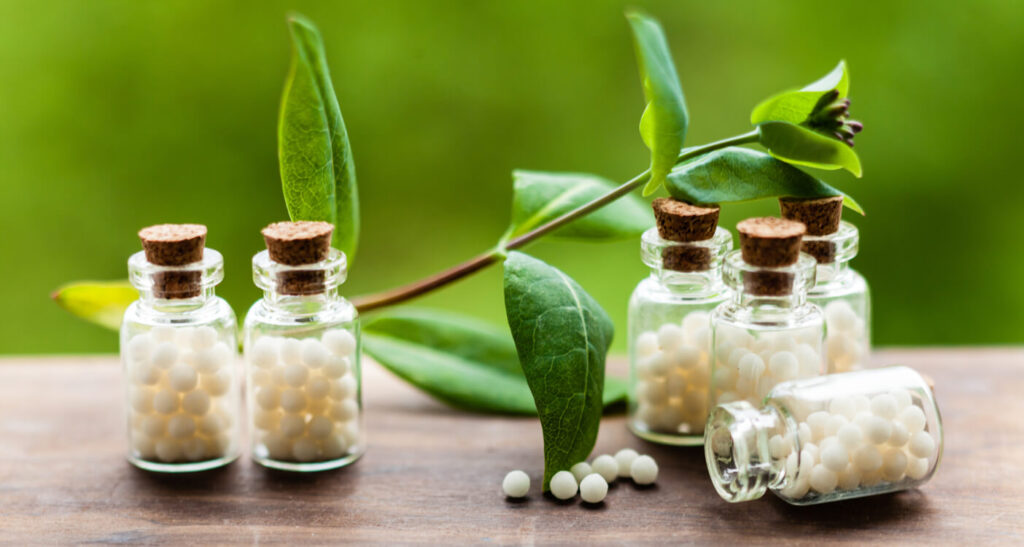We have all experienced times of ill-health that, for the most part, have been addressed by a variety of trained medical professionals. What many of us do not know, however, is that we can deal with some common complaints by ourselves if only we use a safe and inexpensive form of medicine — homeopathy.
Homeopathy is a holistic system of medicine founded over 200 years ago by Samuel Hahnemann, MD, the renowned German chemist and physician. The essence of homeopathy is dealing with health problems by stimulating and rebalancing the body’s own energy principle, or “vital force,” which can get disturbed by different causes, viz., injuries, stresses, violent emotions, dietary indiscretions, etc.
The disharmony in the vital force is often manifested through symptoms — which are primarily deviations from the norm and language of the vital force.
If we want to take matters into our own hands and deal with health conditions, we can do so by correctly following homeopathy’s principles and carefully “listening” to the language of symptoms.
There are hundreds of homeopathic remedies derived from a variety of sources, and it is by matching the symptom-picture of the substance closest, or most “similar,” to the symptom-picture produced in an ill individual, that a cure is achieved. This process in homeopathy is known as “like cures like.” This is the foundational principle of homeopathy.
The following is a selection of conditions that respond well to homeopathic medicines, or remedies. When the remedy is properly chosen, the imbalance in the vital force would be resolved quite easily and within a few doses of the medicine.
It should be noted that any condition which appears to be complex, any condition in which the symptom-picture is confusing, or severe, and any illness which rapidly worsens, or goes on for more than a couple of days needs to be addressed by a trained homeopath. Of course, in an emergency, the patient should be taken to a hospital immediately.
The following are cases which were addressed and resolved by carefully observing and matching the symptom-picture of the patient and the symptom-picture of well-known homeopathic remedies.
Case 1: Indigestion
Homeopathy came to the rescue when Patient A returned from a night of heavy eating and drinking to find himself feeling terribly ill with indigestion.
Patients A’s symptoms included —
A distended abdomen
Offensive flatulence (gas)
Pain and tenderness (sensitivity to touch) in the pit of the stomach
A strong desire for fresh air
Symptoms better sitting up
Symptoms temporarily improved by belching
The homeopathic remedy prescribed was Carbo vegetabilis (vegetable charcoal), in the 30c potency, as the substance produces the same symptom-picture that Patient A was exhibiting. The prescription was given every 3-4 hours as needed and repeated only as long as the symptoms persisted.
Case 2: Heatstroke
Homeopathy triumphed in a case of exposure to the elements when Patient B was affected badly by heatstroke at a soccer match.
Patient B’s symptoms included —
Hot, flushed face
Throbbing, bursting headache
Dizziness, light-headedness
Nausea; vomiting
Lack of sweating despite the heat.
It was most important that Patient B’s body temperature be cooled down and so she was immediately moved to a cool room.
She was given Glonoinum (nitro-glycerine) in the 30c potency, every 30 minutes, until there was obvious improvement after which the remedy was stopped.
It should be noted that the symptom-picture includes —
Dilated, fixed pupils
Dry (not sweaty) skin
Delirium.
The remedy most similar would be Belladonna (deadly nightshade) 30c, taken immediately and repeated at 2-3 hour intervals, or as needed till full improvement is achieved.
Case 3: Anticipatory anxiety
It was exam time again and the anticipatory anxiety experienced by Patient C was running high. Fortunately, homeopathy was able to intervene to balance things out.
Patient C’s symptoms included —
Lurking anxiety and preoccupation with exams
Anticipation and nervousness
Impulsiveness, a desire to do foolish things
Hurriedness
Bouts of diarrhoea
The homeopathic remedy prescribed was Argentum nitricum 200c (silver nitrate), at 3-4 hour intervals. The doses were spaced further apart on improvement and the patient weaned off from the medicine completely.
Case 4: Insomnia
Patient D returned from another stimulating meeting at the Environmental Club. He was flying high on the challenging ideas of the night and replaying much of what had been so stimulating during the meeting. It was late and he went to bed only to find that it was impossible to sleep. His mind and body were hyperactive.
Patient D’s symptoms included —
An overactive mind
Wide awake
A rush of ideas playing over and over again
Restlessness and nervousness.
The homeopathic remedy prescribed was Coffea cruda 30c (unroasted coffee), every 30 minutes, until sleep ensued.
Case 5: Acute injury
One of homeopathy’s best known and extremely fast-acting and effective remedies was prescribed to Patient E following a nasty fall from his bicycle which resulted in damage to the soft tissue, severe bruising and a bump on the forehead.
Patient E’s symptoms included —
Bruises over much of his body
Bump on the forehead, not yet discoloured
Sore, bruised and beaten feeling
Fear of being touched
The remedy prescribed was Arnica montana (leopard’s bane), in the 30c potency, every hour initially, and spacing the doses further apart upon improvement. Arnica reigns supreme in injuries where the soft tissue is involved. It ought to be also considered in head injuries in which a bump that has not yet discoloured manifests. Its action is extremely swift.
Summary & results
The five cases illustrated, in this article, were resolved with a few doses of the prescribed homeopathic remedy. All remedies were given either in the 30c, or 200c, potency, created through the process of “potentisation.” This procedure continually dilutes the original substance and then “succusses,” or shakes, it a specified number of times between each dilution. The process produces safe, energetic, non-toxic homeopathic medicines, or remedies.


 [/column]
[/column]